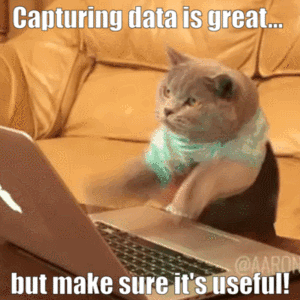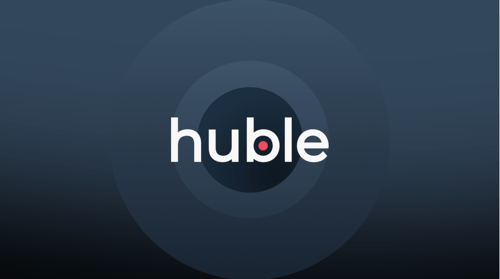In this blog, Emma Clark, Senior HubSpot Account Manager at Huble DIgital, explains how you can customise the 'About' section on your HubSpot contact records to ensure you only ever see the information you need. Find out more.
How to set up custom contact records in HubSpot
From a marketing or sales perspective, knowing what content leads have engaged with, what pages they have viewed and how they converted can be tremendously useful.
Not only does this information make it easier for you to tailor your marketing and sales efforts, it also makes it easier for your salespeople to have meaningful conversations with prospects.
But how can you get all of this information?
If you’re using HubSpot and want to find out everything there is to know about a contact in HubSpot, have a look at their contact record.
HubSpot contact records are goldmines of information. They store and track every interaction, from website visits to the deals the contact is associated with, in a single, central location.
That said, there can be some drawbacks… especially if you’re using a lot of custom contact properties or a contact has been in your CRM for a long time. You might have more information than you can handle or need! We call this information overload!

So how can you cull all this unnecessary information?
Well, the good news is that the About section of HubSpot contact records can be customised to only show the information you want to see. These changes can be applied team-wide (so everyone has the same view) or individual users can modify their own.
With custom about views, you can quickly find the information you search for on a day-to-day basis!
But how do you do this and what information should salespeople and marketers add to their custom views?
First steps to creating a custom About view
Creating your own custom view on a HubSpot contact record is really straightforward. Here’s what you need to do:
1. Navigate to Contacts in HubSpot and click on any contact.
2. Click on the ‘About this contact’ section and scroll to the bottom and select ‘View all properties’.

3. HubSpot will then list the contact properties that form the About profile on the left and all the other properties on the right.

4. You can drag and move properties in the contact's about profile to reorder them or remove them from the list.

5. If there are any contact properties from the ‘All properties’ list that you want to add to your custom About view, then hover over the contact property and select ‘add to about’.

And there you have it, custom About views for you and your team!
What fields do the B2BML team use?
There are a number of different fields that may be important to certain members of your team. Remember, what’s useful for marketing might not be helpful for sales when they want to reach out to a prospect.
To illustrate the difference, I spoke to Matt, our Marketing Director, and Rowley, our Head of New Business, to ask them how they customise their ‘About’ views.
Matt says:
“I use fields that quickly tell me where my contacts are in the buyer’s journey, what content they are engaging with and whether they are a HubSpot user or not. Our content differs as to whether you are already using the HubSpot tool or not, so it’s important for me to understand this in order to be able to assign a persona.”
Here’s what Matt likes to see:
- First Name
- Last Name
- Company Name
- Job Title
- Original Source
- Buyer Persona/Job Function
Buyer personas are a great way of segmenting data, so I like to double check that all contacts have a persona. If they have no persona, this might prompt more research into how many people this affects in our database and whether we need to identify a new target group. - Existing HubSpot User?
Again, it is handy to understand who is an existing HubSpot user so we can tailor our messaging accordingly and segment data. - Lifecycle Stage
Are they a lead, MQL, SQL or a customer? Identifying where contacts are in the buyer journey can help tailor email communications and inform us of what campaigns we need to run next. - HubSpot Score
This gives a good estimate of how much interaction a contact has had with our website and content (which is crucial if you decide to run lead scoring across your contact database). - B2BML Blog Email Subscription
Knowing who is subscribed to our blog and reading our content regularly will help us to gauge interest. - First and Last Web page Seen
This provides a quick reference of the last page seen by a contact – I like to know what a contact first and last interacted with on our site, as it helps us to work out what pages should be optimised for conversions. - Average Page Views
How many pages are contacts viewing when they come to our site? This helps us to understand just how engaged a contact is based on how much content they interact with. - Time of Last Visit
Contacts might be more active during a certain time of day. If there’s a trend, I can ensure that promotional activity happens around that time.
An interesting point made in Marcus Sheridan’s book, ‘They Ask You Answer’ (a must-read for marketers) is that the more content your prospects consume, the more objections and questions they answer themselves. This moves them further down the funnel before they reach out to your sales team. So, when they eventually do, they know exactly what they’re looking for!

Rowley, our head of sales, takes a slightly different approach:
“My custom view is a short summary of the useful information that I need to have to hand before contacting a prospect. This gives me a bigger picture of who the client is and their situation before I pick up the phone or start writing an email.
I also drill down into the company records and use HubSpot Insights. This is where HubSpot taps into its database of 1 billion companies to match a contact’s email address to a URL by pulling in company data. This saves you having to add company information manually and provides valuable context and background detail.”
Here’s what Rowley would like to see:
- First Name
- Last Name
- Email Address
- Company Name
- Job Title (helps me to prioritise my outreach to prospects)
- Website URL
I normally use this to further research the client and to understand what they might need help with. - Annual Revenue, Company Size and Location
Annual revenue and company size helps me to forecast HubSpot license budgets and needs. It also helps me to identify whether the client is likely to be a good fit for us. - What is your core HubSpot challenge?
Before jumping on a call with a prospect, I like to ensure that I’ve got a clear idea of the main challenge they are looking to overcome. From there, I can focus more on solutions that meet the client’s needs. - Previous sales engagement
Having insight into previous contact my team has had with a prospect allows me to see what support they required and quickly catch up with background information. - First conversion point
This helps me to not only identify what content asset a contact converted on, but also if that asset is a frequent conversion point for other contacts. - Original source
Knowing whether someone has come from organic search, PPC or from a referral is incredibly useful. For example, if a contact found us via the HubSpot Partner Directory, then I know that they have greater understanding and interest in HubSpot’s marketing platform than those arriving from organic search. Armed with this information, I can modify my sales approach accordingly. - Last webpage seen/Last conversion
Having this information can really help to break the ice when speaking to contacts and potential prospects. It also gives me an opportunity to talk about other bits of content they may be interested in. - Qualified In Interest/Qualified Out
As well as working out if a contact qualified in or out, I can also use this to determine what products/services prospects are interested in and if we have enough sales content to help guide them through the purchase process.
I can also use this property to determine why – at a glance – we didn’t move forward with a particular lead.
So, what are the benefits of using custom ‘About’ views?
- Having an easy reference of key information before contacting prospects.
- Tailoring conversations from last conversion points, lifecycle stage and biggest challenges.
- Identifying areas for future campaigns and buyer persona research.
- Having a clear idea of whether a contact is likely to be a decision maker so you can prioritise leads.
Using custom ‘About’ views on a HubSpot contact record will ensure the information you need is always at your fingertips, but it is important to remember that they are only as useful as the data you collect and put into them.

Bring your marketing and sales teams together to discuss what information you need to qualify contacts in or out. From there, work out what custom fields you need on forms to ensure you collect the right data for custom ‘About views’.
If you're looking for other HubSpot tips and tricks, our HubSpot Hacks eBook has everything you need. You can download it for free by just clicking the button below.











-3.png?width=500&height=320&name=Matt%20-%20imagery%20bank%20(8)-3.png)

